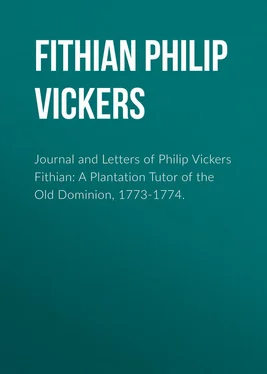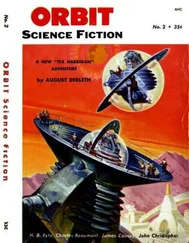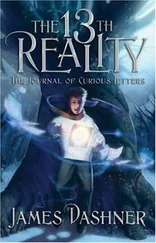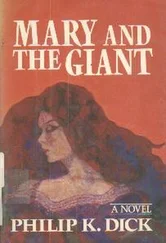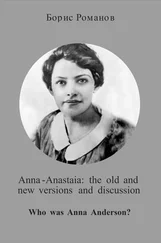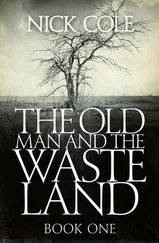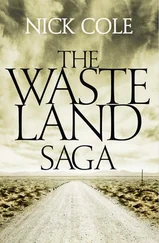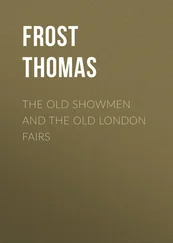Philip Fithian - Journal and Letters of Philip Vickers Fithian - A Plantation Tutor of the Old Dominion, 1773-1774.
Здесь есть возможность читать онлайн «Philip Fithian - Journal and Letters of Philip Vickers Fithian - A Plantation Tutor of the Old Dominion, 1773-1774.» — ознакомительный отрывок электронной книги совершенно бесплатно, а после прочтения отрывка купить полную версию. В некоторых случаях можно слушать аудио, скачать через торрент в формате fb2 и присутствует краткое содержание. Жанр: foreign_antique, foreign_prose, на английском языке. Описание произведения, (предисловие) а так же отзывы посетителей доступны на портале библиотеки ЛибКат.
- Название:Journal and Letters of Philip Vickers Fithian: A Plantation Tutor of the Old Dominion, 1773-1774.
- Автор:
- Жанр:
- Год:неизвестен
- ISBN:нет данных
- Рейтинг книги:3 / 5. Голосов: 1
-
Избранное:Добавить в избранное
- Отзывы:
-
Ваша оценка:
- 60
- 1
- 2
- 3
- 4
- 5
Journal and Letters of Philip Vickers Fithian: A Plantation Tutor of the Old Dominion, 1773-1774.: краткое содержание, описание и аннотация
Предлагаем к чтению аннотацию, описание, краткое содержание или предисловие (зависит от того, что написал сам автор книги «Journal and Letters of Philip Vickers Fithian: A Plantation Tutor of the Old Dominion, 1773-1774.»). Если вы не нашли необходимую информацию о книге — напишите в комментариях, мы постараемся отыскать её.
Journal and Letters of Philip Vickers Fithian: A Plantation Tutor of the Old Dominion, 1773-1774. — читать онлайн ознакомительный отрывок
Ниже представлен текст книги, разбитый по страницам. Система сохранения места последней прочитанной страницы, позволяет с удобством читать онлайн бесплатно книгу «Journal and Letters of Philip Vickers Fithian: A Plantation Tutor of the Old Dominion, 1773-1774.», без необходимости каждый раз заново искать на чём Вы остановились. Поставьте закладку, и сможете в любой момент перейти на страницу, на которой закончили чтение.
Интервал:
Закладка:
Footnote_28_28
Dr. John Witherspoon (1723-1794), a Scottish Presbyterian clergyman, served as president of the College of New Jersey at Princeton intermittently from 1768 until his death in 1794. A staunch Calvinist, Witherspoon exerted a strong influence on American educational, religious, and political development. Owing largely to the labors of his former students, a number of whom went as clergymen and tutors to the Southern colonies, his influence was very extensive in that region.
Footnote_29_29
John Debow, Oliver Reese, Samuel McCorkle and Moses Allen, and Andrew Bryan. With the exception of Andrew Bryan of Baltimore who was admitted to the bar, all of these young men were licensed as Presbyterian ministers.
Footnote_30_30
Elizabeth Beatty, Fithian's "Laura," frequently visited in the home of her brother, Dr. John Beatty, who lived at Princeton. Fithian had known Elizabeth earlier in the home of her sister, the wife of the Reverend Enoch Green, a Presbyterian minister of Deerfield, New Jersey, under whom he had prepared for college. Cf. Williams, John, ed., The Journals and Letters of Philip Vickers Fithian, 1767-1774 , p. 55, fn. 3.
Footnote_31_31
The Reverend Enoch Green.
Footnote_32_32
Mrs. Peck was the mother of Fithian's friend, John Peck of Deerfield. The two boys had studied together under the Reverend Enoch Green, and had later been classmates at Princeton. John Peck succeeded Fithian as tutor of the Carter children at Nomini Hall in 1774, and later married Anne Tasker or "Nancy" Carter, and settled in Richmond County, Virginia.
Footnote_33_33
The Reverend Andrew Hunter.
Footnote_34_34
The American Whig Society and the Cliosophic Society were rival literary organizations at the College of New Jersey at Princeton.
Footnote_35_35
William R. Smith, who was one of Fithian's classmates, was afterwards ordained as a Presbyterian minister. Cf. Williams, ed., Fithian , p. 34, fn. 2.
Footnote_36_36
Fithian was studying theology in Deerfield under the supervision of the Reverend Enoch Green, at the same time he was being taught Hebrew by Andrew Hunter, Sr., in nearby Greenwich.
Footnote_37_37
William Eugene Imlay was graduated at Princeton in 1773. Cf. Williams, ed., Fithian , p. 41.
Footnote_38_38
Probably Samuel Fithian, the brother of Philip's father. Philip refers to him as "Uncle Fithian" on other occasions.
Footnote_39_39
Henry Lee (1729-1787) of "Leesylvania," in Prince William County, Virginia (known later as "Light Horse Harry" Lee) was a student at Princeton at this time. He was a brother of "Squire" Richard Lee of "Lee Hall" in Westmoreland County. Henry Lee later became the father of Robert E. Lee.
Footnote_40_40
Dr. John Beatty had been graduated at the College of New Jersey in 1769. Cf. Williams, ed., Fithian , p. 90, fn. 1.
Footnote_41_41
John McCalla, Jr., was a friend of Fithian who lived in Philadelphia.
Footnote_42_42
Joel Fithian was the cousin of Philip Fithian, who married Elizabeth Beatty Fithian after the latter's death. Cf. Williams, ed., Fithian , p. xv.
Footnote_43_43
Patapsco River.
Footnote_44_44
Bladensburg, Maryland.
Footnote_45_45
Georgetown, then a small town in Maryland, was later incorporated in the District of Columbia.
Footnote_46_46
Alexandria, Virginia.
Footnote_47_47
Colchester was a thriving shipping center on the Occoquan River, now called Occoquan Creek, in Fairfax County, Virginia, near where this creek empties into the Potomac. The town had been incorporated by an act of the Assembly in 1753 to promote "trade and navigation."
Footnote_48_48
Dumfries, a town on Quantico Creek, had been settled by a group of Scotch merchants, who traded in the colony. Quantico Creek empties into the Potomac. Dumfries had been incorporated by Act of Assembly in 1749. The town had prospered owing to its advantageous position as a center of trade in the western section of the Northern Neck.
Footnote_49_49
Aquia had originated as a Catholic settlement on Aquia Creek about the middle of the eighteenth century. A short distance from the town were located the celebrated Aquia stone quarries which had been opened as early as 1683.
Footnote_50_50
Stafford Court House, the seat of government of Stafford County.
Footnote_51_51
Thomas Ludwell Lee (1730-1778) of "Bellevue" in Stafford County was the fourth son of Thomas Lee of "Stratford" in Westmoreland County, who had served as president of the Council of Virginia.
Footnote_52_52
The Chilton family owned plantations in Westmoreland and Fauquier Counties. Cf. William and Mary College Quarterly , second series, Vol. 10 (January 1930), pp. 56-63.
Footnote_53_53
Benjamin Tasker Carter.
Footnote_54_54
The Fauntleroy family owned extensive holdings and occupied a high social position in Richmond County and other sections of the Tidewater. "Mars Hill" and "Crandall" were two seats of the family on the Rappahannock River in Richmond County, and in the vicinity of the modern towns of Warsaw and Tappahannock. A third manor plantation of the Fauntleroys' was "The Cliffs," also on the Rappahannock, some miles north of the other two. The name of the family was pronounced variously as "Fantleroy," "Fantilroy" and "Fauntleroy." Aphia, Samuel and Henry or "Harry" Fauntleroy were the daughter and sons of Moore Fauntleroy (1716-1791) of "The Cliffs." Information supplied by Miss Juliet Fauntleroy of Altavista, Virginia.
Footnote_55_55
Francis Christian held his dancing classes in rotation in a number of the manor houses of the Northern Neck at this period. After the pupils had been instructed an informal dance was usually enjoyed on such occasions.
Footnote_56_56
Nomini Church, one of the two Anglican houses of worship in Cople Parish, stood on the bank of the Nomini River some five miles from Carter's home.
Footnote_57_57
Isaac William Giberne, an English clergyman, thought to have been a nephew of the Bishop of Durham, was licensed to preach in Virginia in 1758. The following year he had arrived in the colony and was serving as the minister in Hanover Parish in King George County. Possessing a high tempered and somewhat contentious nature, Giberne was involved in numerous sharp controversies. An exceptionally sociable and convivial man, he spent much of his time in visiting and gambling and tippling. Admitted by his enemies at that time to be the most popular and admired preacher in the colony, he had been invited shortly after his arrival in Virginia to preach a sermon before the Burgesses. This sermon was later printed at their request. In 1760 Giberne married a wealthy widow, Mary Fauntleroy Beale of Richmond County, a daughter of Moore Fauntleroy of "Crandall." She had previously been the wife of Charles Beale. Removing to her plantation, "Belle Ville," he was two years later chosen as minister of Lunenburg Parish, and served in that capacity until 1795. He is mentioned in numerous diaries and letters of the period. Cf. Goodwin, Edward Lewis, The Colonial Church in Virginia , pp. 271-272; Jonathan Boucher, Reminiscences of an American Loyalist , passim ; letter of Miss Juliet Fauntleroy of November 21, 1941 in Department of Research and Record, Colonial Williamsburg, Inc.
Читать дальшеИнтервал:
Закладка:
Похожие книги на «Journal and Letters of Philip Vickers Fithian: A Plantation Tutor of the Old Dominion, 1773-1774.»
Представляем Вашему вниманию похожие книги на «Journal and Letters of Philip Vickers Fithian: A Plantation Tutor of the Old Dominion, 1773-1774.» списком для выбора. Мы отобрали схожую по названию и смыслу литературу в надежде предоставить читателям больше вариантов отыскать новые, интересные, ещё непрочитанные произведения.
Обсуждение, отзывы о книге «Journal and Letters of Philip Vickers Fithian: A Plantation Tutor of the Old Dominion, 1773-1774.» и просто собственные мнения читателей. Оставьте ваши комментарии, напишите, что Вы думаете о произведении, его смысле или главных героях. Укажите что конкретно понравилось, а что нет, и почему Вы так считаете.
